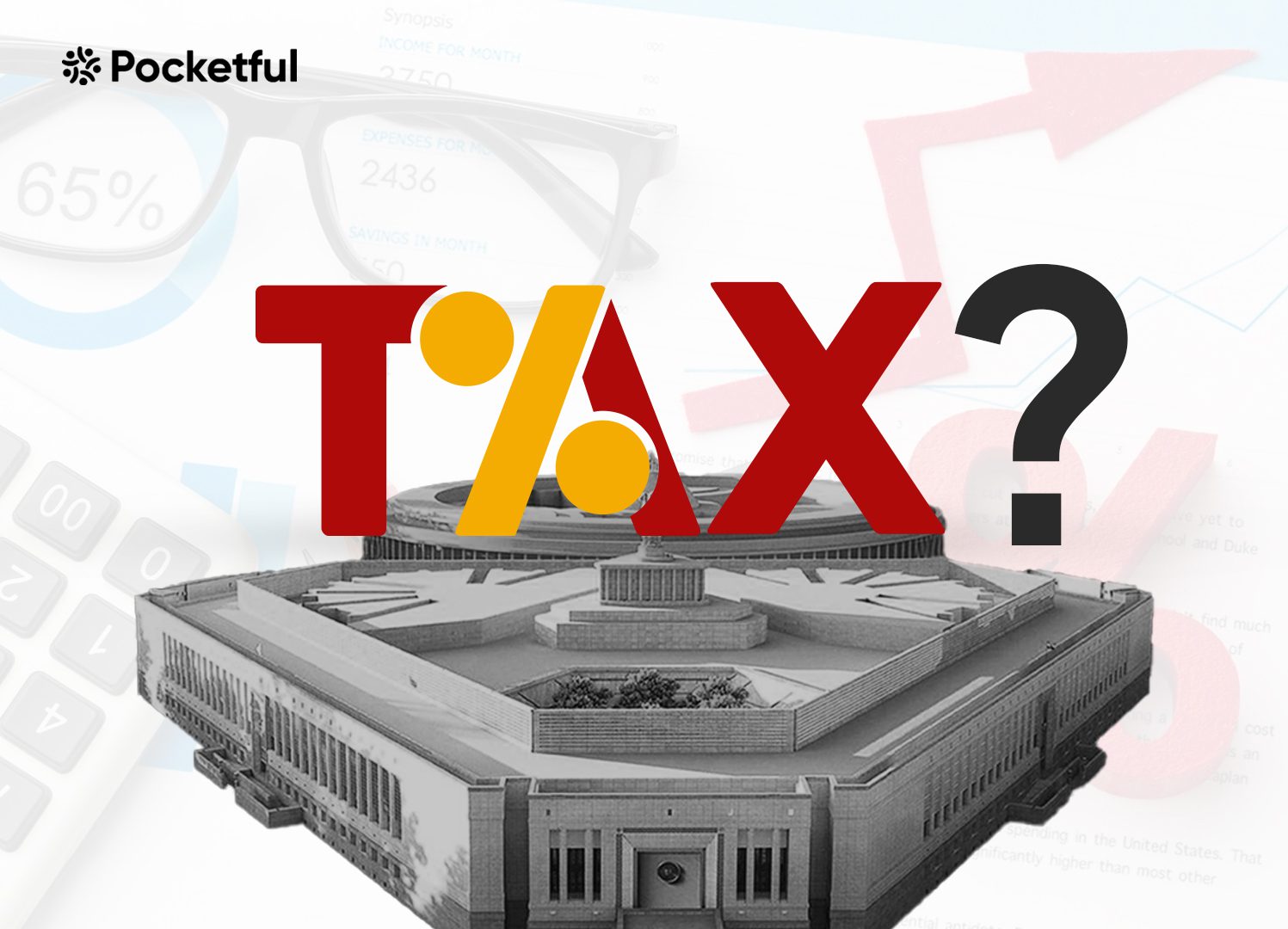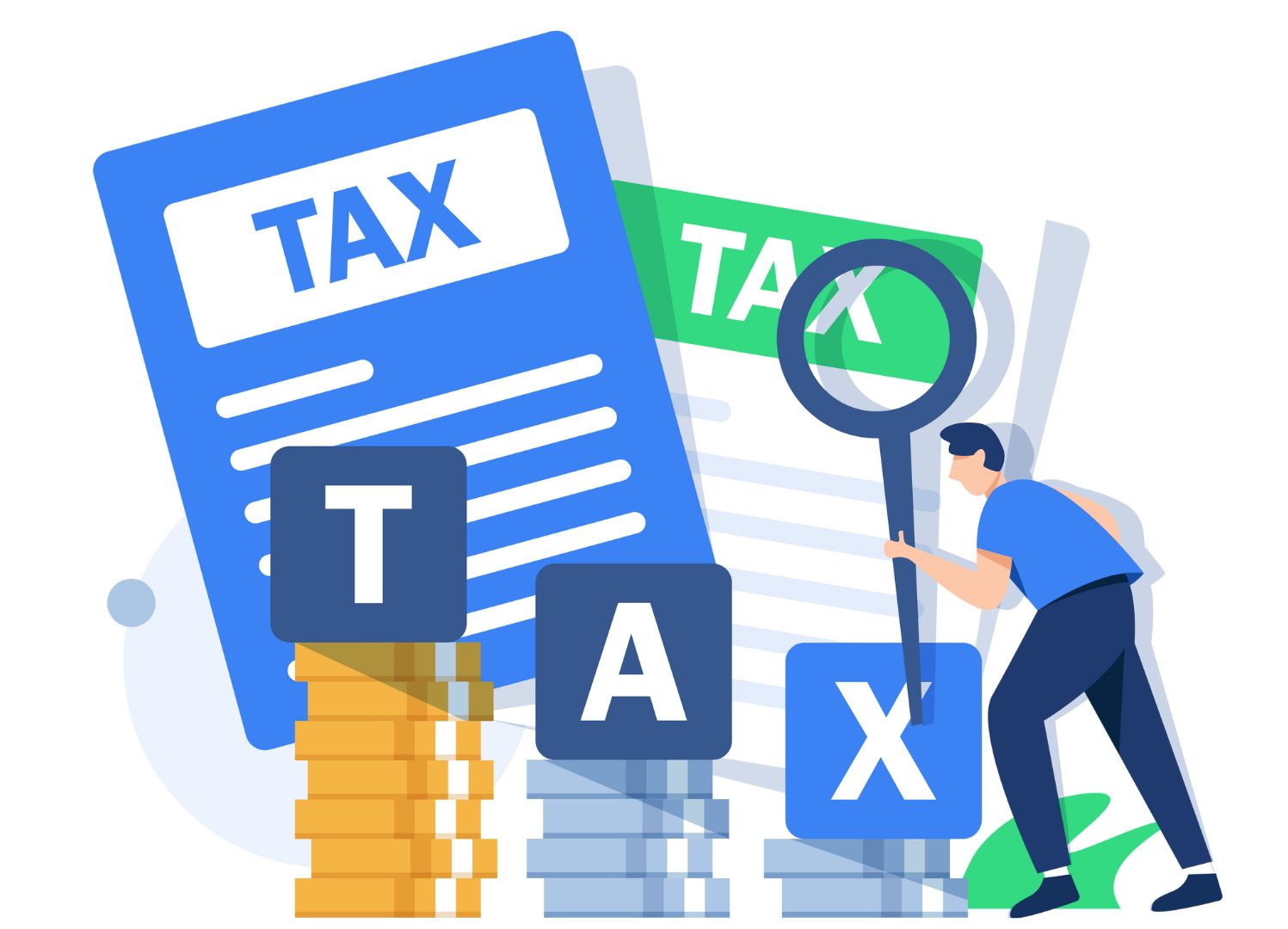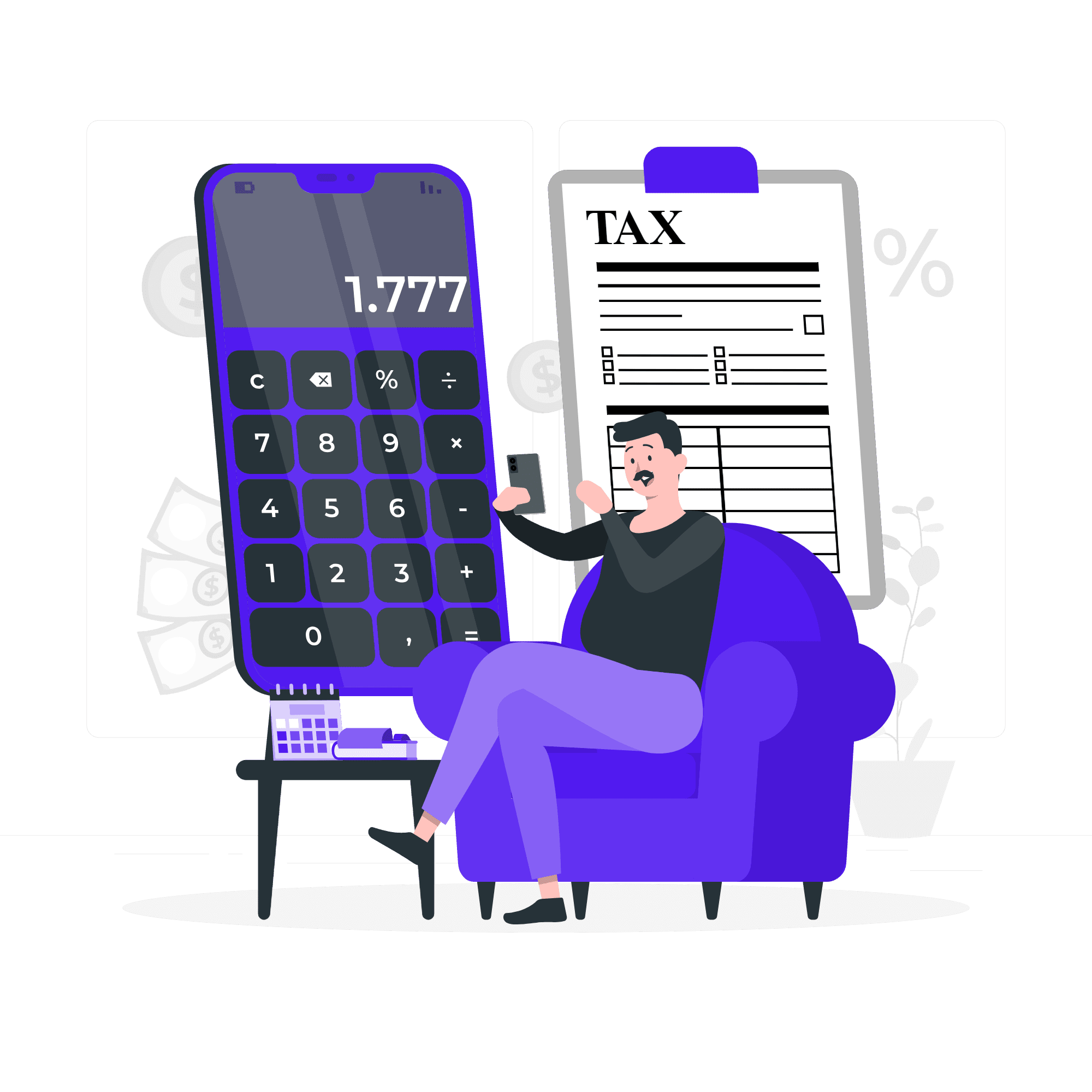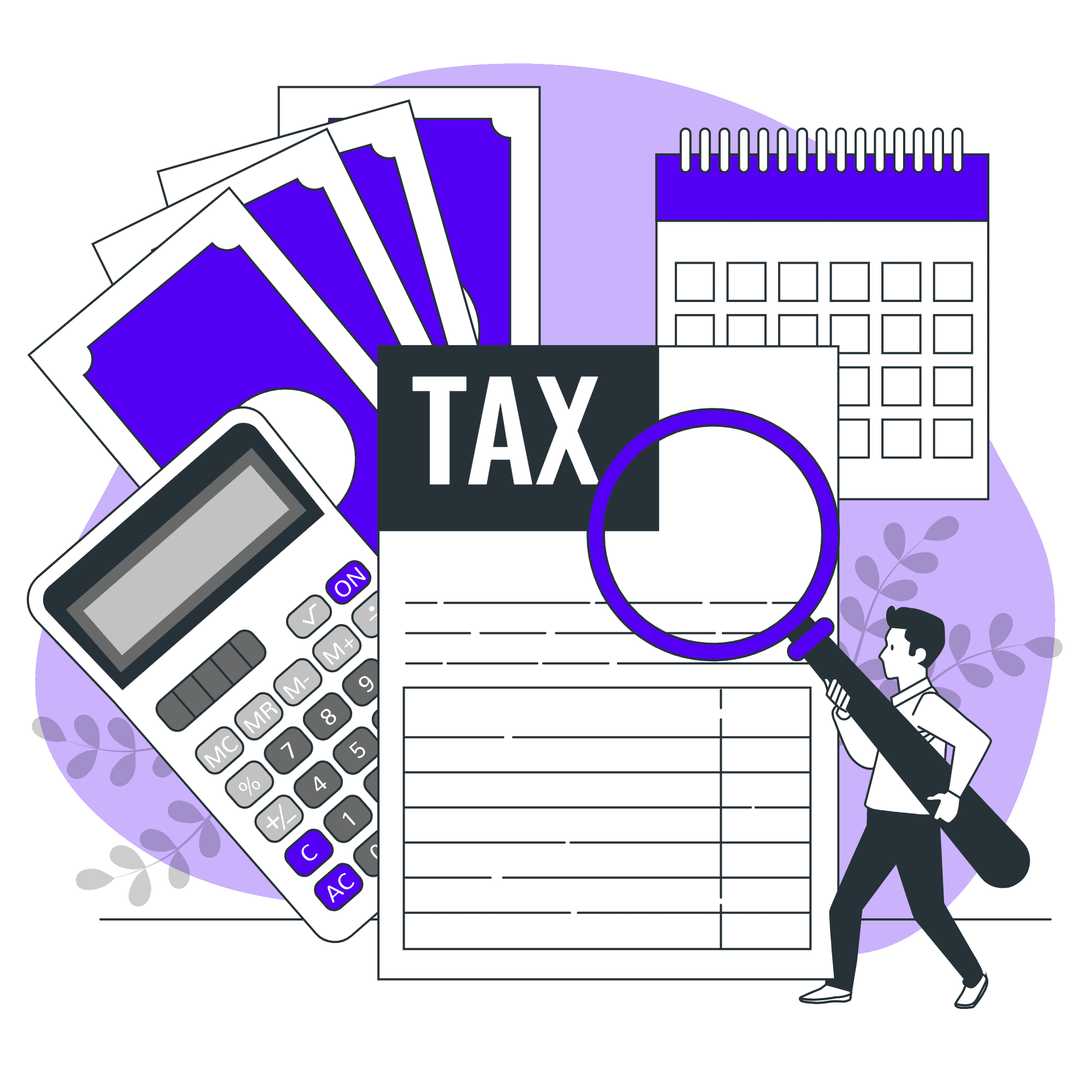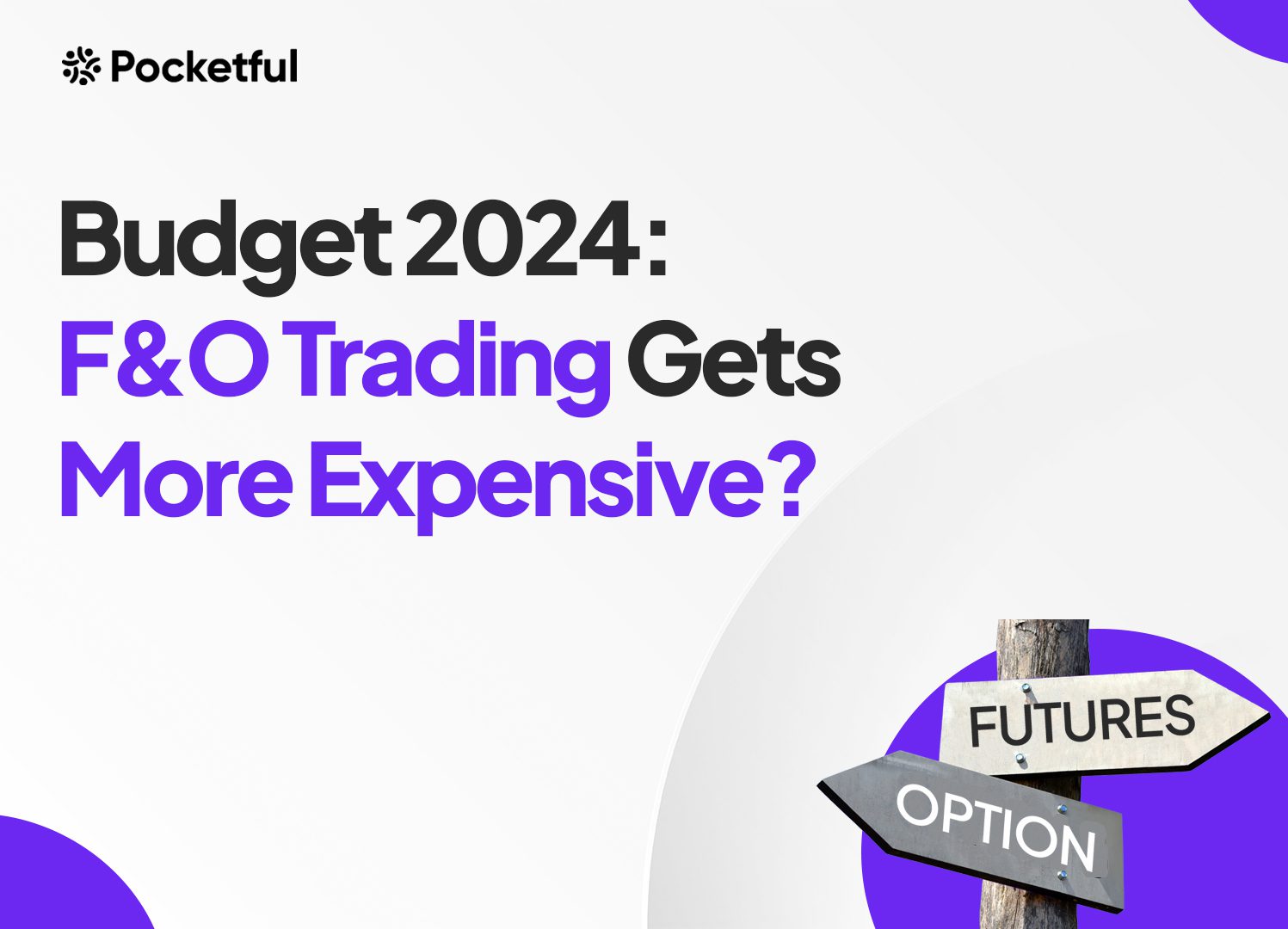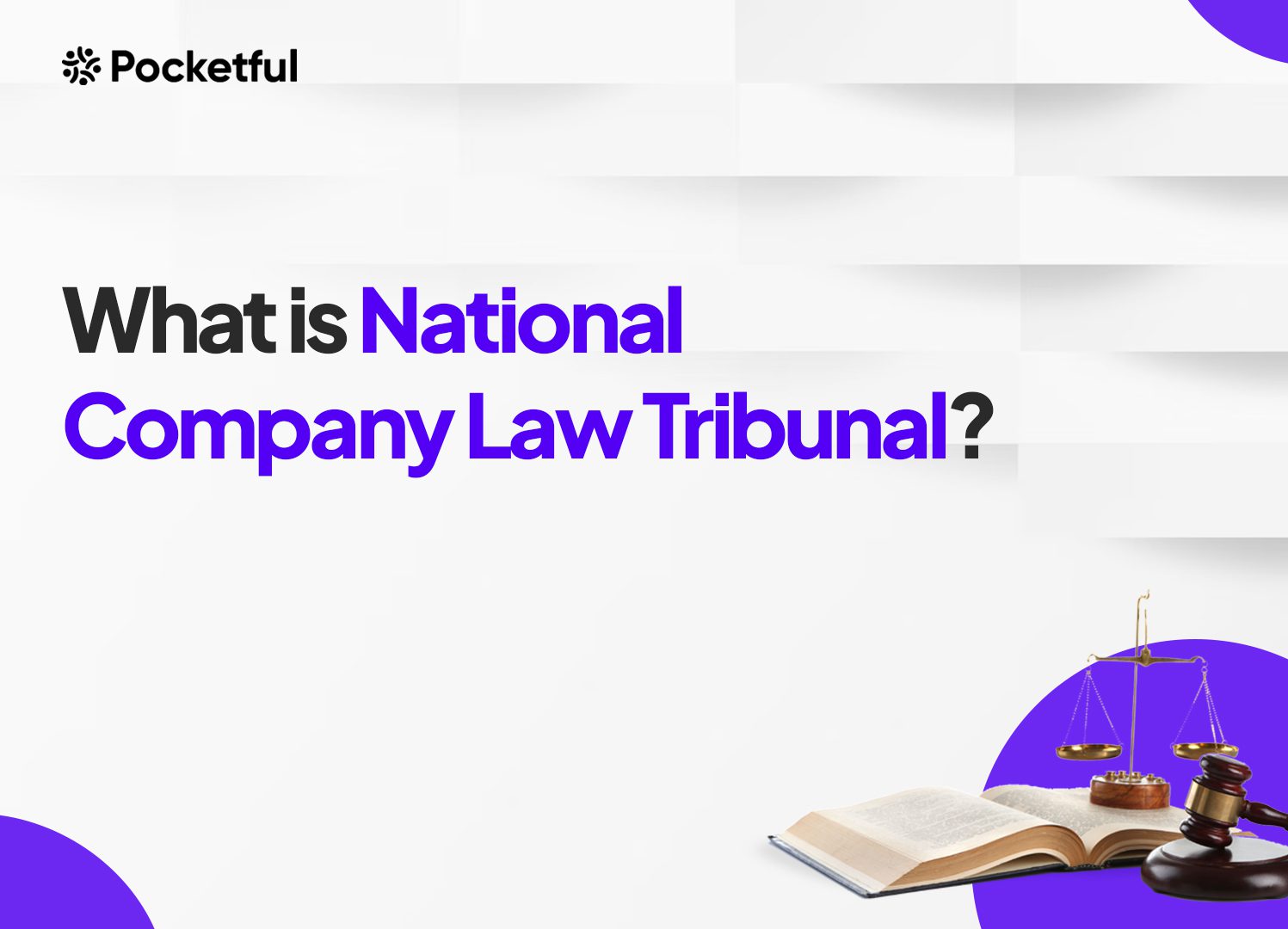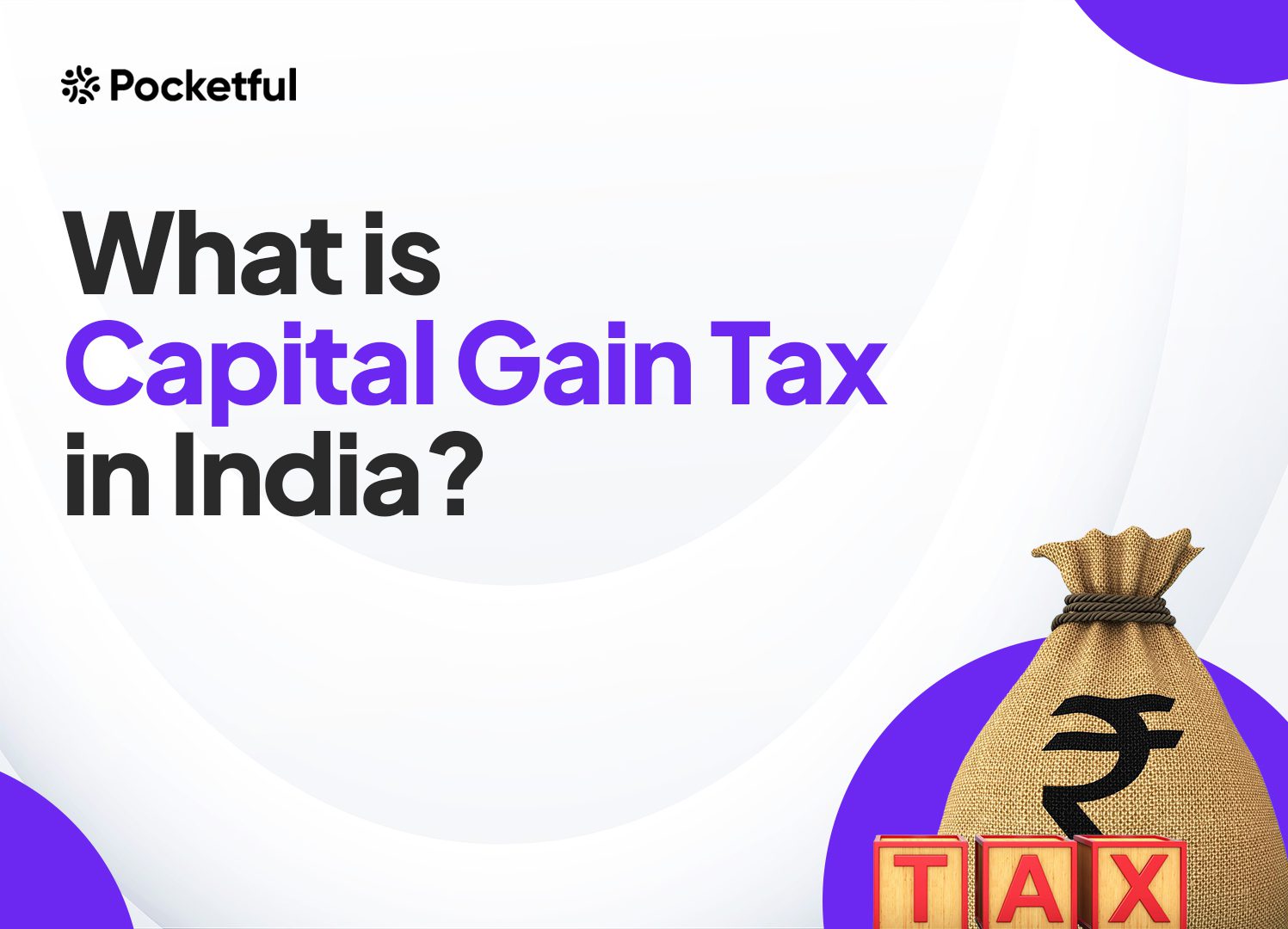The stock market has always been a captivating subject, full of drama, suspense, and high stakes. Hollywood and streaming platforms have turned the thrill of trading, investing, and corporate battles into some of the most engaging movies and web series. Stock markets are a place with a lot of interesting stories, which the entertainment industry has depicted in creative ways over the years. The entertainment industry has done an excellent job of simplifying complex financial events so that anyone can understand them. However, most of them are based on real-life incidents that caused the stock markets to plummet.
In this blog, we will provide an overview of the best movies and web series about the share market that are worth watching.
Performance Table: Best Stock Market Movies and Web Series
| S.No. | Title | Release Year | Genre | IMDB Rating | Rotten Tomatoes Rating | Key Focus |
|---|---|---|---|---|---|---|
| 1 | The Wolf of Wall Street | 2013 | Biography, Comedy, Crime | 8.2 | 80% | Unethical practices, stockbroker lifestyle |
| 2 | Scam 1992: The Harshad Mehta Story | 2020 | Biography, Crime, Drama | 9.3 | N/A | Stock market manipulation, Indian finance |
| 3 | Margin Call | 2011 | Drama, Thriller | 7.1 | 87% | 2008 Financial Crisis, risk management |
| 4 | Inside Job | 2010 | Documentary | 8.2 | 98% | Financial corruption, 2008 crisis |
| 5 | Rogue Trader | 1999 | Biography, Drama | 6.4 | 30% | Unauthorized trading, bank collapse |
| 6 | Wall Street | 1987 | Drama | 7.4 | 78% | Insider trading, corporate greed |
| 7 | The Big Short | 2015 | Biography, Comedy, Drama | 7.8 | 88% | 2008 crisis, housing market collapse |
| 8 | Boiler Room | 2000 | Crime, Drama, Thriller | 7 | 66% | Stock fraud, pump-and-dump schemes |
| 9 | Too Big to Fail | 2011 | Drama | 7.3 | N/A | 2008 financial crisis response |
| 10 | Enron: The Smartest Guys in the Room | 2005 | Documentary | 7.6 | 97% | Corporate scandal, accounting fraud |
| 11 | Billions (TV Series) | 2016- | Drama | 8.4 | N/A | Legal and personal conflicts, hedge funds |
| 12 | Baazaar | 2018 | Crime, Drama, Thriller | 6.6 | N/A | Ambition, insider trading |
| 13 | Gafla | 2006 | Drama, Thriller | 7.4 | N/A | Stock market manipulation, Harshad Mehta-inspired |
| 14 | Black Monday | 2019-2021 | Comedy, Drama | 7.4 | 56% | 1987 market crash, financial chaos |
| 15 | Equity | 2016 | Drama, Thriller | 5.5 | 80% | Women in finance, IPO drama |
Read Also: Best Trading Apps in India
List of Best Stock Market Movies in Hindi
Here’s a table listing the best stock market-related movies in Hindi:
| S.No. | Movie/Series | Year | Plot/Theme | Highlights |
|---|---|---|---|---|
| 1 | Gafla | 2006 | A young man enters the stock market and gets involved in scams. | Inspired by the Harshad Mehta scam. |
| 2 | Scam 1992: The Harshad Mehta Story | 2020 | Chronicles the rise and fall of Harshad Mehta in the stock market. | Realistic depiction of the stock market and its inner workings. |
| 3 | Corporate | 2006 | A drama about corporate rivalries and ethical dilemmas. | Explores power dynamics in business boardrooms. |
| 4 | Baazaar | 2018 | A young aspirant gets involved in the greed and deception of the financial world. | Slick portrayal of the stock market with standout performances. |
| 5 | The Big Bull | 2021 | A dramatized take on the Harshad Mehta-inspired stock market boom of the ’80s and ’90s. | Comparable to Scam 1992 but with a cinematic approach. |
| 6 | Share Bazaar | 1997 | Focuses on the ups and downs of the stock market. | One of the earliest Hindi films about the stock market. |
| 7 | Guru | 2007 | Loosely inspired by Dhirubhai Ambani’s life and rise as an industrial tycoon. | Explores ambition, business strategies, and financial risk-taking. |
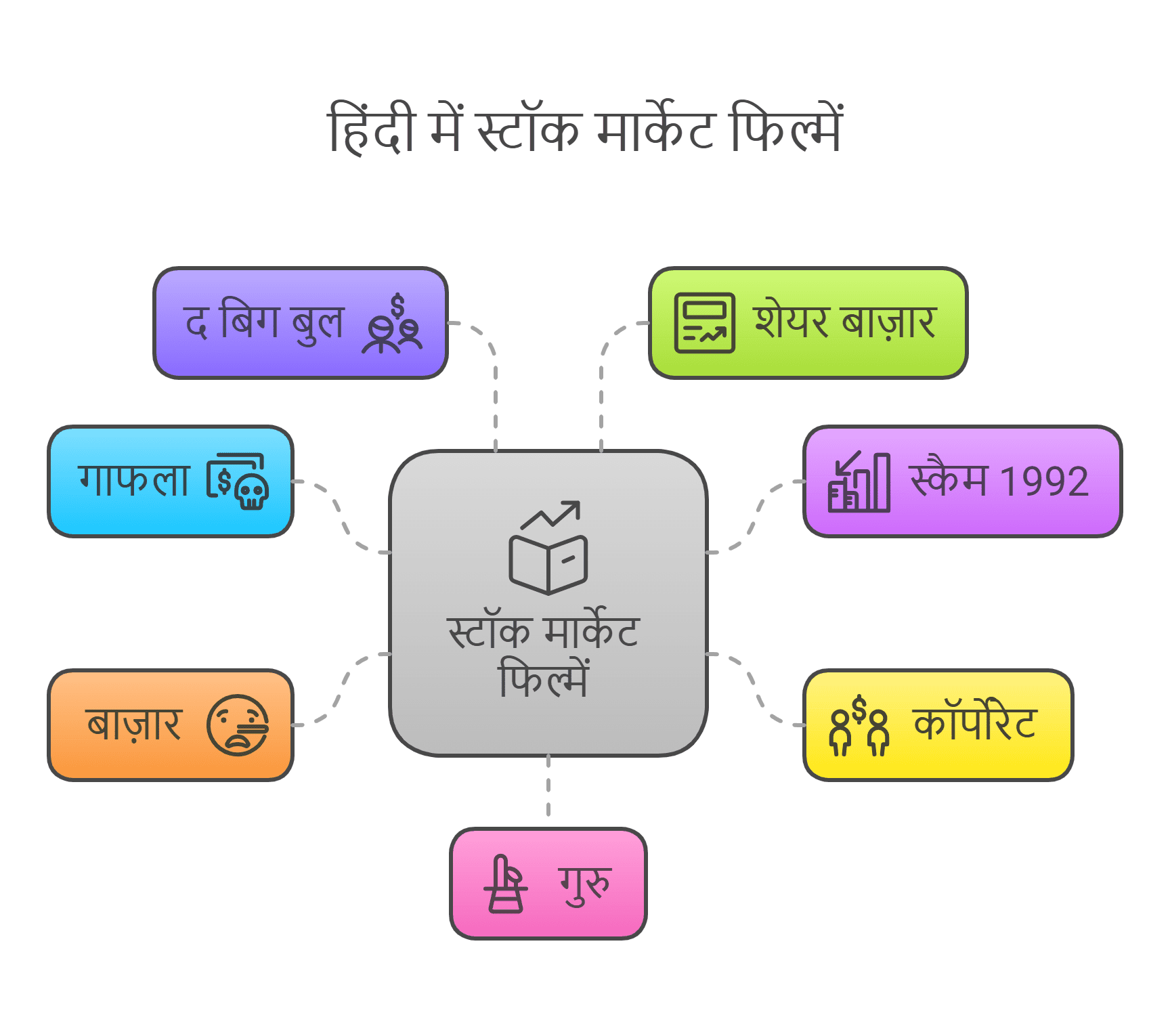
These movies and series provide a mix of drama, thrill, and education about the stock market and financial industries, making them engaging for audiences with an interest in this field.
Read Also: 10 Best YouTube Channels for Stock Market in India
Overview of the Best Share Market Movies and Web Series
The overview of the stock market movies and web series are:
1. The Wolf of Wall Street (2013)
The film, which was released in 2013, was based on the true story of Jordan Belfort, a stockbroker who operated a dishonest brokerage business. It is revealed in this film that Jordan co-founded Stratton Oakmont with a man by the name of Donnie and that the company participated in pump-and-dump stock price manipulation. As a result, Jordan has amassed an enormous fortune over time and subsequently becomes entangled in illicit operations, including drugs, women, and other things. Subsequently, they caught the interest of law authorities, notably the FBI. After an investigation, he lost all his wealth and faced serious repercussions. Leonardo DiCaprio portrayed Jordan in the film. The film was financially successful and made over $400 million.
- Genre: Biography, Comedy, Crime
- Director: Martin Scorsese
- Starring: Leonardo DiCaprio, Jonah Hill, Margot Robbie
- Key Takeaway: The dangers of unethical practices in the stock market.Language: English
- Budget: ₹830 crore (approx.)
- Earnings: ₹3,254 crore (approx.)
- Available On: Netflix, Amazon Prime Video
2. Scam 1992: The Harshad Mehta Story (2020)
A book named “The Scam: Who Won, Who Lost, Who Got Away” was written by journalists Sucheta Dalal and Debashis Basu. The book’s contents served as the basis for the “Scam 1992: The Harshad Mehta Story”, which was released in 2020. The series narrates the tale of the largest financial fraud in India, which took place in the early 1990s. Pratik Gandhi played the role of Harshad Mehta. Mehta was well-known for his aggressive investment strategies and market manipulation methods. During his time, the Indian stock market soared to astronomical highs, due to which he was known as the “The Big Bull.” His prowess in manipulating the Indian Banking System and stock prices caught the attention of journalist Sucheta Dalal, portrayed by Shreya Dhanwanthary. She investigated the fraud and released her findings, which led to Harshad Mehta’s arrest, and ultimately, the Indian stock market crashed.
- Genre: Biography, Crime, Drama
- Director: Hansal Mehta
- Starring: Pratik Gandhi, Shreya Dhanwanthary, Hemant Kher
- Key Takeaway: The importance of transparency and the potential consequences of exploiting financial loopholes.
- Language: Hindi
- Budget: Not publicly disclosed
- Earnings: Not applicable (TV series)
- Available On: SonyLIV
3. Margin Call (2011)
This American film narrates the actions performed by the employees at a large Wall Street investment bank for 24 hours during the financial crisis of 2007–2008. The movie’s title describes a scenario where an investor must increase the assets pledged as security for a loan after their value drops below a predetermined threshold. Eric Dale, the company’s head of risk management, developed a model that reveals a financial risk that could cause the firm to collapse. He alerted his bosses and other executives to the risk, but they initially ignored it. In an attempt to stay out of bankruptcy, companies strive to sell off their assets by the next day. This film illustrates how financial company mismanagement caused the global share market to crash.
- Genre: Drama, Thriller
- Director: J.C. Chandor
- Starring: Kevin Spacey, Paul Bettany, Jeremy Irons
- Key Takeaway: The risks involved in financial markets and how decisions made in crisis moments can impact the world.
- Language: English
- Budget: ₹29 crore (approx.)
- Earnings: ₹161 crore (approx.)
- Available On: Amazon Prime Video, Hulu, Peacock
4. Inside Job (2010)
The 2010 documentary Inside Job showcases the circumstances leading up to the financial crisis of 2007-2008. The documentary starts with an analysis of prevalent deregulations in the finance industry in the early 1980s. The dangerous aspects of these decisions are explained in the film, including mortgage-backed securities and credit default swaps. The film examines the economic bubble and how rising real estate prices encouraged banks to lend money without first determining the borrower’s creditworthiness. In 2007 and 2008, subprime loan defaults caused investment banks like Lehman Brothers and Bear Stearns to fail, while the government bailed out other institutions like AIG. The film illustrates how senior bank executives disregarded established guidelines, which caused the world stock market to collapse.
- Genre: Documentary
- Director: Charles Ferguson
- Narrated by: Matt Damon
- Key Takeaway: The far-reaching consequences of financial corruption and the need for transparency and regulation in the financial industry.
- Language: English
- Budget: ₹17 crore (approx.)
- Earnings: ₹64 crore (approx.)
- Available On: Netflix
5. Rogue Trader (1999)
Rogue Trader is a movie based on a true story about a reckless trader named Nick Leeson who made financial decisions that caused the UK-based Barings Bank to fail. The autobiography “Rogue Trader: How I Bought the Barings Bank and Shook the Financial World” served as the inspiration for the film. The film starts with the story of a young banker named Nick Lesson, portrayed by Ewan McGregor, who works for Barings Bank and is assigned to Singapore to oversee derivatives trading at the Singapore International Monetary Exchange. Through his aggressive trading, he generated significant profits right away. Afterwards, he started to lose money, but instead of disclosing it, he kept it hidden in a secret account and intended to use riskier wagers to win it back. After placing a large bet on the potential stability of the Japanese market, he lost a significant amount of money—roughly 827 million Euros—when the Japanese stock market experienced a correction in 1995 due to an earthquake in Japan. This event ultimately caused Barings Bank to fail.
- Genre: Biography, Drama
- Director: James Dearden
- Starring: Ewan McGregor, Anna Friel
- Key Takeaway: The dangers of unchecked power and the devastating impact one individual’s actions can have on the financial world.
- Language: English
- Budget: ₹105 crore (approx.)
- Earnings: ₹13 crore (approx.)
- Available On: Amazon Prime Video, Tubi
6. Wall Street
Wall Street is a film about the ins and outs of Wall Street and how people engage in insider trading. The film’s protagonist, Charlie Sheen, plays the role of Bud Fox, a young stockbroker with big goals in the financial world. Gordon Gekko is a smooth-talking, brash and ruthless corporate raider, portrayed by Michael Douglas. In search of success, Bud, a junior stockbroker, encountered Gordon Gekko, a wealthy and assertive stock market participant. Fox’s father, a maintenance worker’s union leader at an airline, provides him with some insider knowledge about a business, which Bud tells Gordon. For his performance in this film, actor Michael Douglas was awarded the Academy Award for Best Actor. The greed, power, ambition, and ethics of a person who is prepared to give up all for their achievement are all depicted in the film.
- Genre: Drama
- Director: Oliver Stone
- Starring: Michael Douglas, Charlie Sheen
- Key Takeaway: The consequences of corporate greed and ethical compromises.
- Language: English
- Budget: ₹124 crore (approx.)
- Earnings: ₹362 crore (approx.)
- Available On: Disney+, Amazon Prime Video
7. The Big Short
The Big Short, based on a non-fiction book by Michael Lewis, was released in 2015 and was regarded as a critically acclaimed film. Adam Mckay directed it. The events leading up to the 2008 financial crisis are explained in the movie. The film is about the people who foresaw the 2008 financial institution meltdown and placed bets against it, ultimately making substantial profits.
Christian Bale plays the role of Michael Burry, a hedge fund manager with a distinct perspective on the market. He studies the mortgage industry and concludes that the loans given out by financial institutions are risky and prone to fail. It draws attention to how subprime loans triggered the expansion and collapse of the US housing market. In addition to being a commercial success, this film won other accolades, including the Academy Award for Best Adapted Screenplay.
- Genre: Biography, Comedy, Drama
- Director: Adam McKay
- Starring: Christian Bale, Steve Carell, Ryan Gosling
- Key Takeaway: Understanding the risks and ethical implications of subprime mortgages.
- Language: English
- Budget: ₹231 crore (approx.)
- Earnings: ₹1,102 crore (approx.)
- Available On: Netflix, Amazon Prime Video
8. Boiler Room
The film Boiler Room, directed by Ben Younger, was released in 2000. The film is focused on the world of brokerage firms involved in questionable and frequently unlawful trading activities. Giovanni Ribisi played the role of Seth Davis, a young man who operates an unlicensed casino in his apartment after dropping out of college. He later worked for a brokerage company called J.T. Marlin, where he learned how to aggressively offer worthless penny stocks—to gullible customers and persuade them that they have a fantastic investment opportunity. He later learns about the negative aspects of JT Marlin’s company, including the pump and dump strategy, exploiting clients to make enormous profits. The film was made on a budget of $7 million and earned approximately $28 million at the box office.
- Genre: Crime, Drama, Thriller
- Director: Ben Younger
- Starring: Giovanni Ribisi, Vin Diesel
- Key Takeaway: The dangers of stock fraud and the impact of unethical trading.
- Language: English
- Budget: ₹58 crore (approx.)
- Earnings: ₹232 crore (approx.)
- Available On: Amazon Prime Video, Hulu
9. Too Big to Fail
The 2011 HBO film centers on the 2008 financial crisis and the responses of Federal Reserve Chairman Ben Bernake and Treasury Secretary Henry Paulson to the failure of Lehman Brothers. The film’s central theme is how the collapse of one organization might affect the collapse of the global financial system. Intense pressure and political scheming were also featured in the film as the Fed Chairman and New York Fed President attempted to stop the financial system from collapsing. Paul Giamatti played the role of Federal Reserve Chairman Ben Bernanke in the film, while James Woods portrayed Lehman Brothers CEO Dick Fuld. Critics praised the film for its narrative, directing, and acting, and it has been nominated for multiple awards, including the Screen Actors Guild and Golden Globes.
- Genre: Drama
- Director: Curtis Hanson
- Starring: William Hurt, Paul Giamatti
- Key Takeaway: The consequences of poor financial management and the efforts to prevent economic disaster.
- Language: English
- Budget: Not publicly disclosed
- Earnings: Not applicable (TV film)
- Available On: HBO Max
10. Enron: The Smartest Guys in the Room
The growth and fall of the Enron Corporation, one of the worst business scandals in the United States, is the subject of the 2005 documentary Enron, which Alex Gibney directed. Bethany Mclean and Peter Elkind’s book served as the basis for this documentary. Enron’s management committed a significant accounting scandal that ultimately caused the company to go bankrupt in 2001. The corporation manipulates accounting procedures and inflates its profits. Energy costs increase due to the company’s purposely induced power and energy constraints in California. In addition to receiving numerous honors and praise from critics, this documentary was nominated for an Academy Award for Best Documentary Feature.
- Genre: Documentary
- Director: Alex Gibney
- Key Takeaway: The destructive effects of corporate fraud and the need for transparency.
- Language: English
- Budget: ₹5.8 crore (approx.)
- Earnings: ₹39 crore (approx.)
- Available On: Amazon Prime Video, Hulu
11. Billions
In 2016, this American television show made its debut. Personal rivalry, legal conflicts, and the fierce world of hedge funds were portrayed in the series. The show centers on two powerful individuals: Bobby Axelrod, played by Damian Lewis, who is the head of Axe Capital and a billionaire hedge fund manager, and Chuck Rhoades, played by Paul Giamatti, a US attorney who, despite his intelligence, has a vicious personality and is determined to bring Axelrod down. Later in the series, Mike Prince, a billionaire, appeared as Axe’s new rival. The script, directing, plot, acting, and other aspects of the Billions series have all won praise from critics.
- Genre: Drama
- Creator: Brian Koppelman, David Levien
- Starring: Damian Lewis, Paul Giamatti
- Key Takeaway: The personal and legal battles within the hedge fund industry.
- Language: English
- Budget: Not publicly disclosed
- Earnings: Not applicable (TV series)
- Available On: Showtime, Amazon Prime Video
12. Baazaar
Gauravv K. Chawla directed the 2018 Bollywood film Baazaar. Rohan Mehra portrayed the character of Rizwan Ahmad, an ambitious man from a tiny Indian town who wants to pursue a career in the stock market. Saif Ali Khan, a formidable and enigmatic businessman, portrayed Shakun Kothari. After meeting Shakun Kothari, Rizwan began managing his investments and used insider information to make profits. The negative aspects of the stock market are portrayed in this film. The film, which portrays greed, ambition, and moral compromise, draws inspiration from several Hollywood productions, including Wall Street and The Wolf of Wall Street.
- Genre: Crime, Drama, ThrillerDirector: Gauravv K. Chawla
- Starring: Saif Ali Khan, Rohan Mehra
- Key Takeaway: The moral compromises people make to achieve financial success.
- Language: Hindi
- Budget: ₹34 crore (approx.)
- Earnings: ₹40 crore (approx.)
- Available On: Amazon Prime Video
13. Gafla
Gafla is a 2006 Bollywood film directed by Sameer Hanchate. The main focus of the film is to portray the details of Harshad Mehta’s stock market scam. The movie shows how a driven individual who aspires to succeed discovers loopholes in the Indian financial system and utilizes them to make huge profits. The story’s protagonist, Subhod Mehta, is a tiny businessman with an interest in the stock market. He quickly establishes his financial empire by using his high-risk trading methods to control stock prices, but he must finally confront the market’s negative aspects, too. He joined the stock market with huge ambitions but later turned to immoral behavior in an attempt to appease brokers and investors.
- Genre: Drama, Thriller
- Director: Sameer Hanchate
- Starring: Vinod Sharawat
- Key Takeaway: How ambition and manipulation can lead to massive consequences.
- Language: Hindi
- Budget: Not publicly disclosed
- Earnings: Not widely released
- Available On: YouTube
14. Black Monday
It’s a television show that ran from 2019 to 2021 and was produced by David Caspe alongside Jordan Cahan. The film is based on an event that occurred in 1987, when one of the biggest stock market crashes in history occurred on October 19. Don Cheadle plays the role of Maurice Monroe, the head of a successful brokerage firm named the Jammer Group. He was extremely ambitious yet ethically flexible. Andrew Rannells portrayed the character of Blair Pfaff, a crucial member of the firm and an unpredictable stockbroker. The show highlights the challenging situations protagonists face as Black Monday approaches.
- Genre: Comedy, Drama
- Creators: David Caspe, Jordan Cahan
- Starring: Don Cheadle, Andrew Rannells
- Key Takeaway: The impact of risky trades and unethical practices in volatile times.
- Language: English
- Budget: Not publicly disclosed
- Earnings: Not applicable (TV series)
- Available On: Showtime, Amazon Prime Video
15. Equity
The 2016 financial thriller Equity, directed by Meera Menon, centers on Naomi Bishop, a senior investment banker. The film covers the narrative of men’s domination in the finance industry and offers a distinctive viewpoint on the field. Anna Gunn, James Purefoy, and Alysia Renier were the film’s main actors. While working on an IPO for a tech company, Naomi encountered several challenges, including mistrust from their male coworkers and her complex relationship with a hedge fund manager. The film is notable because it depicts the realities faced by women in the finance industry.
- Genre: Drama, Thriller
- Director: Meera Menon
- Starring: Anna Gunn, James Purefoy
- Key Takeaway: The challenges and biases women face in finance.
- Language: English
- Budget: ₹29 crore (approx.)
- Earnings: ₹13 crore (approx.)
- Available On: Amazon Prime Video, Hulu
Here’s a list of some of the best stock market movies in Hindi or movies with a significant financial and stock market theme that may interest Bollywood enthusiasts:
Read Also: List of Best Media and Entertainment Stocks in India
Conclusion
Many films on the stock market have been made all over the world, but the majority of them are based on the financial crises that occurred in different nations. While some were based on the 2008 financial crisis, others were based on India’s 1992 stock market collapse or the 1995 Japanese market collapse. Every film imparts the wisdom that, despite possible short-term causes for market declines, investors should maintain faith in the stock market because, in the end, it will rise and surpass its prior peak.
Frequently Asked Questions (FAQs)
Which is the best movie based on the stock market?
The stock market has been the subject of many films, such as Rogue Trader, Margin Call, The Wolf of Wall Street, etc.
Which Indian web series is based on the Indian Stock Market crash?
The 1992 Indian stock market crash is the subject of the web series Scam 1992, which is based on financial fraud committed by Harshad Mehta.
What was the reason for the stock market fall in the year 2008?
The collapse of US financial institutions like Lehman Brothers led to a decline in investor trust in banks, which in turn caused the 2008 stock market crisis.
Who played the role of Harshad Mehta in the Scam 1992 web series?
Pratik Gandhi played the role of Harshad Mehta in the Scam 1992 web series.
Who exposed the Scam of 1992?
The scam caused by Harshad Mehta was exposed by a journalist named Suchita Dalal.















